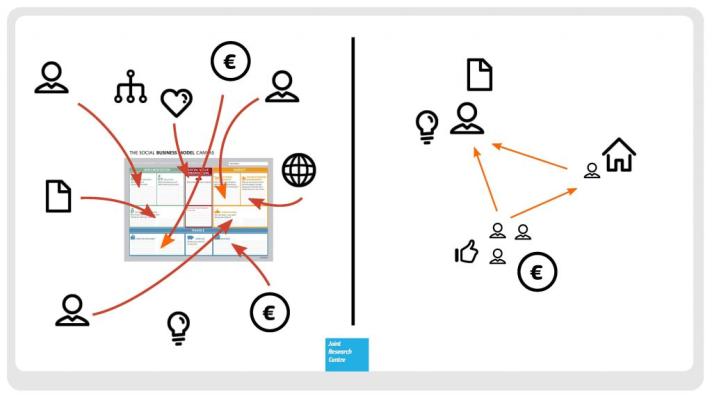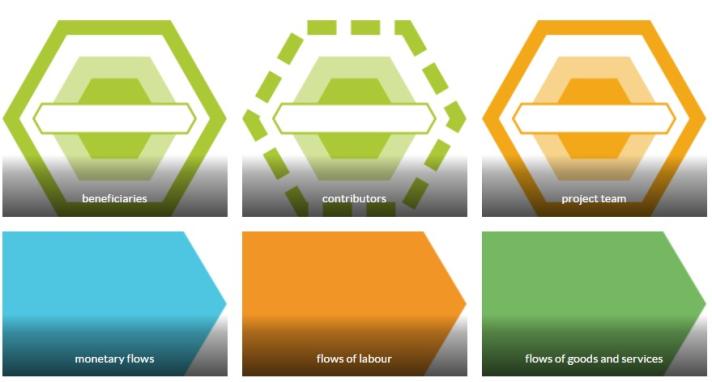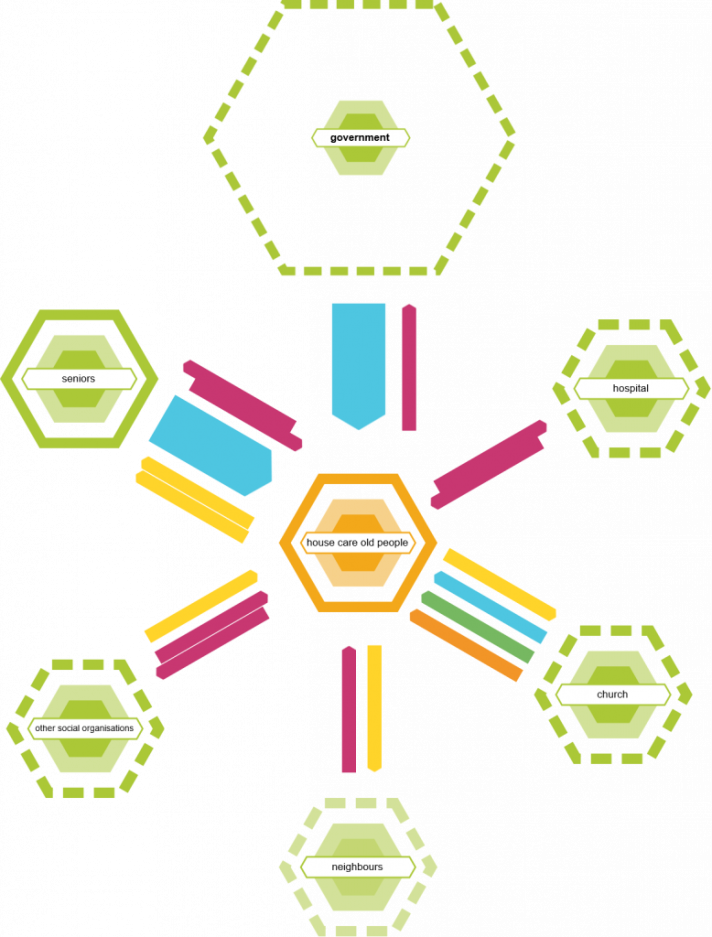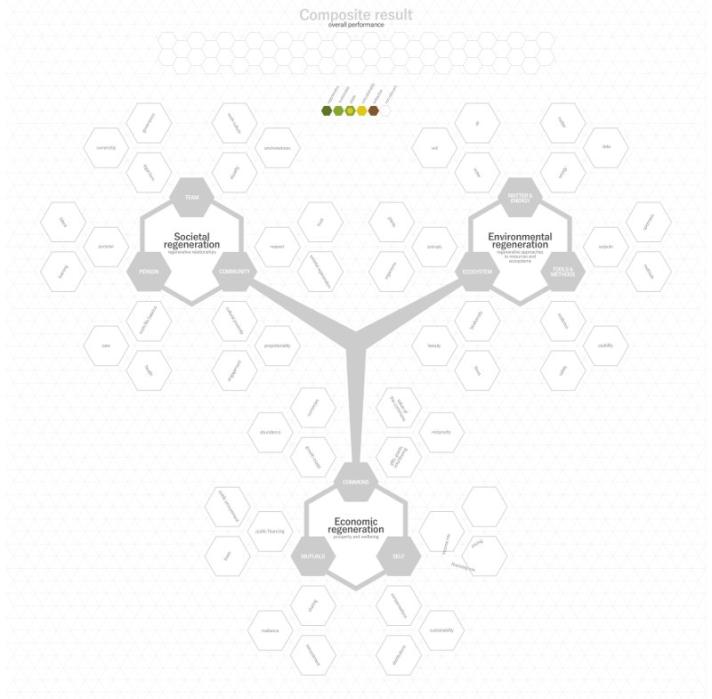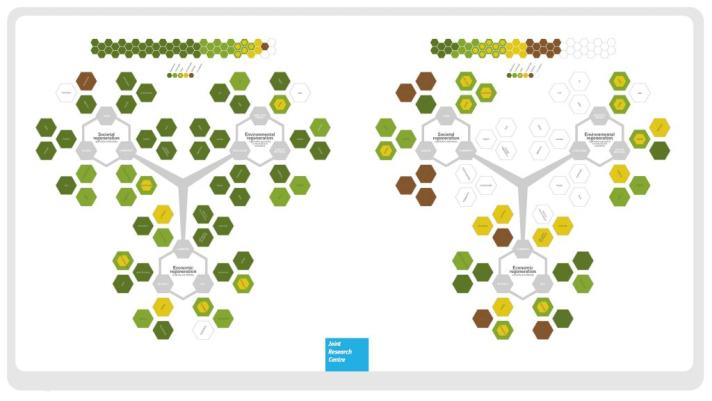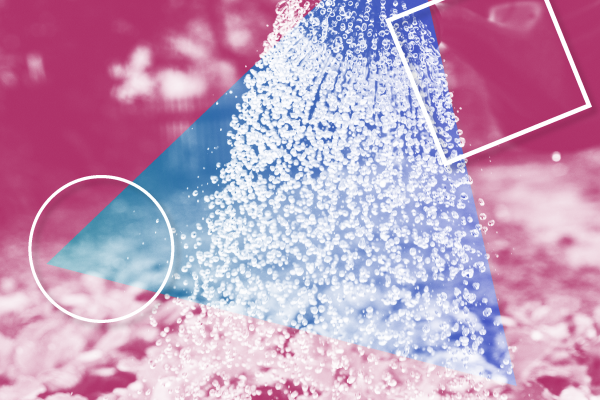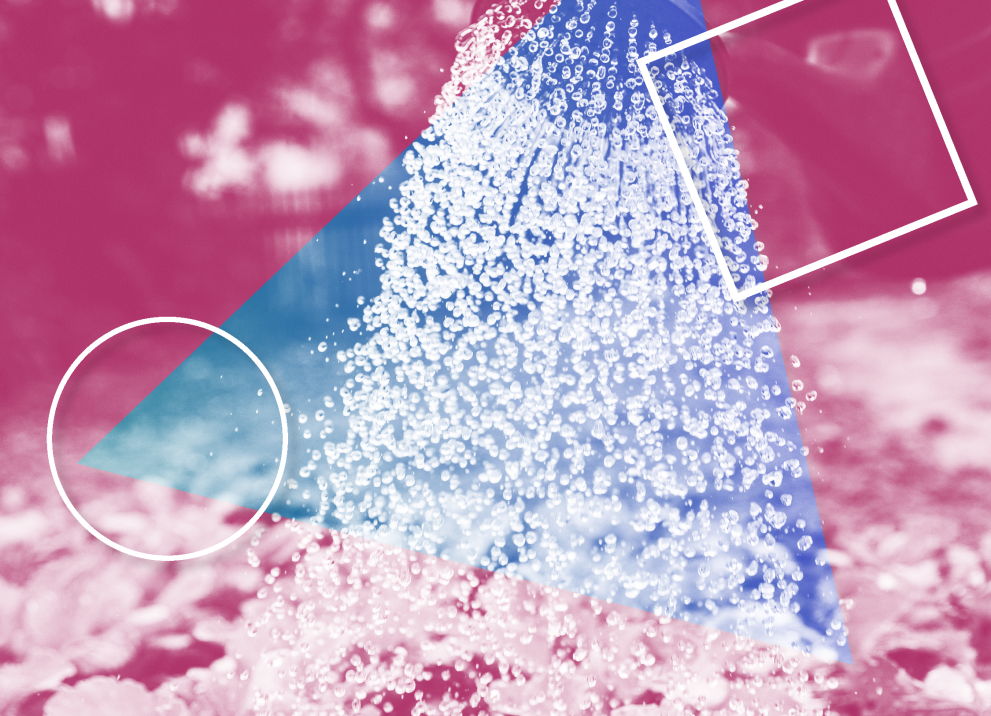
In March 2019 the EU Policy Lab launched the development of a visual method to bring clarity to the European Social Economy ecosystem. Discover what makes it different from any other available business tool.
Social Economy in Europe is a very vital and complex ecosystem that cannot be captured by a single definition. It includes businesses, cooperatives, associations, mutuals, projects of corporate social responsibility, and it embraces several forms of economic activity with very different purpose, size, governance structures and economic priorities.
This is a challenging context for those who need to identify relevant criteria to develop policies and for those who need to demonstrate the short and long term beneficial effects of their activity on society and on the environment
One year ago, the EU Policy Lab started to work on an idea to address these problems and bring clarity in the field: a visual framework to represent consistently all forms of economic activities that work for people and for the planet.
One year later, thanks to the help of several colleagues, practitioners and public officers from all over Europe, the prototype of a new generation of visual canvases is ready to be tested. Here are some key features that make it different from what is commonly available to structure and describe economic activities and some hints of how it could help practitioners and policy makers.
Identities and relationships
The canvases of first generation, like Alex Osterwalder’s Business Model Canvas or one if its adaptations, the Social Business Model Canvas, bring all business-relevant elements in one place and display them in neatly arranged boxes. They are great for building overviews but each element is still an item in a list within a box. Identities, qualities and relationships remain hidden.
Left, the social business model canvas. Right, a canvas that visualizes identities and relationships.
New generation canvases focus on relationships and flows, and treat each item as an “identity” with intrinsic qualities like typology, size or composition. How these items position in space and their size is important as it is an indication of (conceptual) proximity, and relative sizes. Their relationships and the flow of resources can also be represented clearly.
For an entrepreneur, this approach is key to increase situational awareness as it moves all available information into articulated maps. From here, several possible context-aware, strategic exercises are possible.
In parallel, a policy maker can ideally access several different maps to understand how similar activities structure themselves in different locations, what key actors are involved, what is the relative size of participants, etc. and ideally spot the emergence of patterns.
A visual grammar
The Canvas for Social Economy embeds a “visual grammar” that codifies visually each element and its properties in a sort of “vocabulary”.
The images below show some of the “terms” and symbols used in the Canvas to represent communities and types of exchange.
-
beneficiaries
-
contributors
-
project team
-
monetary flows
-
flows of labour
-
flows of goods and services
The presence of a codified visual language acts as an enabling boundary, just like any verbal language. Anyone who takes part in the exercise can express freely, wile focussing on the subjects at hand. After the mapping, any participant can can go back to the map and quickly recall the underlying reasoning.
Compared to traditional “sticky notes” mappings, these exercises give cleaner, more accessible and more coherent results. This is essential to allow entrepreneurs and policy makers to spot areas of improvement and opportunities as the activity evolves.
The quality of the workspace
Moving beyond the familiarity of boxes brings a new design question: how do we restructure the space of our thinking?
The canvas offers two approaches.
The first is free and open: an empty canvas where a visual grammar and a precise vocabulary are the only boundaries. White space is used as the starting point and each activity positions the key actors and indicates the relationships as they wish. The picture below is an example of one of many possible landscapes that can be generated with the Canvas. The hexagons represent types of actors and the arrows indicate types of exchange. The main activity is represented by the orange hexagon at the centre.
The second is structured around the thematic areas of the triple bottom line: Society, Environment and Economy. In this approach, several different dimensions are displayed in coherent clusters and serve to structure a methodic process of exploration and discovery. It also serve to create an articulated space where no dimension has an initially pre-defined priority on the others.
An overarching metaphor for a new narrative
The Canvas for Social Economy adopts the oak tree as an overarching metaphor that reinforces a new narrative about economic ecosystems while guiding the coherent development of the project. The use of strong concepts and metaphors is a common trait in most projects that originates from the culture of design.
Economic activities as living organisms. Left, a regenerative activity; right, an activity taken from mainstream economy.
The competitive, warlike, sometime dualistic, often mechanistic terminology of mainstream economy is challenged here by a narrative that is coherent with the spirit of most if not all social economy projects and activities, that tend to see their work more as a living organism than a link in a value chain.
The colour coding, taken from the shades of colour of a leaf, reinforces the concept and gives indication of the status of each dimension.
Ready to use?
The Canvas for Social Economy is still under development, and some more improvements are expected in the few weeks. Nonetheless, we have already launched a testing phase to challenge it as a policy support tool and as a method to inspire, guide and foster the development of new, regenerative ideas.
If you are interested in mapping your project or if you simply want to test the canvas, please contact us to schedule a session!
MORE INFO ABOUT THE PROJECT:
Why
In the course of the last decades the roots of traditional economic theory have been increasingly questioned by a growing number of theorists and practitioners who look beyond self-interest and profit as drivers and measure of success and well-being. This new, emerging corpus of theory and practice needs new tools to integrate societal and environmental values with traditional economic dimensions. The development of practical, actionable, easy-to-use, people-centred methods to develop regenerative activities, such as the Social Economy Canvas, is not only a direct response to this need, but also reflects a bottom-up approach to the current environmental state of emergency and increasing social inequalities.
What
The Social Economy Canvas is a visual sense making framework inspired by design and by complex-adaptive systems theory. It intends to provide policymakers with an ongoing, bottom-up, macro-assessment of social economy in Europe while supporting practitioners’ development of new ideas for a regenerative economy at micro-level.
How
The inception of the pilot was to identify, dis-entangle and visualize the several dimensions and actors at play in social economy.
Desk research produced an initial context mapping that was iterated several times in co-design workshops with policy-makers, practitioners, academics and designers. Mapping the context is the first step towards the discovery of an emerging framework: it allows each actor and dimension to be visualised and considered in their mutual relevance and importance. This visual approach to sense making is one of the design-inspired methods adopted at the EU Policy Lab for its ability to overcome cultural, cognitive and linguistic barriers and to foster complex-adaptive systems thinking.
The result of the exercise was the current prototype of Social Economy Canvas, a method and a visual tool to comprehend the social, environmental and economic implications of any human activity by maintaining structured, strategic conversations with the ideators and with their beneficiaries.
The canvas is used in micro/local settings by communities, entrepreneurs, support agencies and social investors to empower the design and development of social economy activities. It is also used in macro/global settings by policymakers to contextualise different local activities and identify common challenges and opportunities for the development of new policies.
When
The testing phase, started in December 2019, will refine the canvas as a policy and entrepreneurship tool to identify weaknesses and improve the performance of social economy ecosystems. Eventually, it should contribute to the development of a sound rationale and priorities for legal frameworks and public policy interventions. In parallel, it should also become a useful tool for entrepreneurs and for support agencies that want to align their efforts in favour of a culturally rich and economically prosperous social ecosystem.
Details
- Publication date
- 13 March 2020
- Author
- Joint Research Centre
- EU Policy Lab tags

